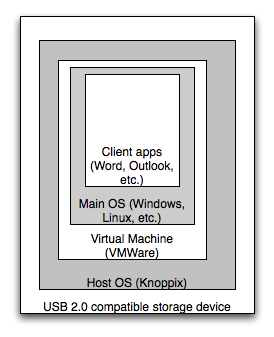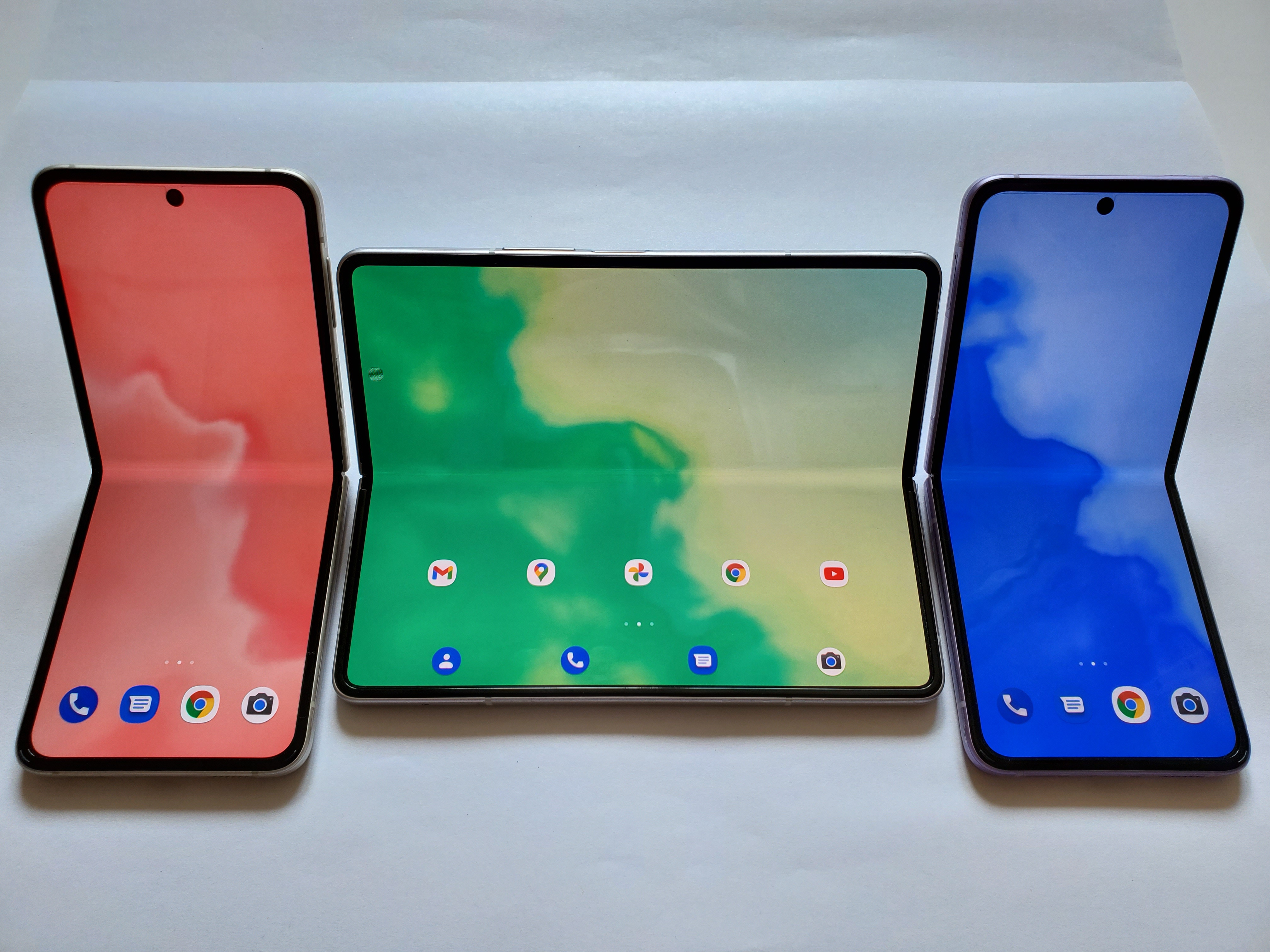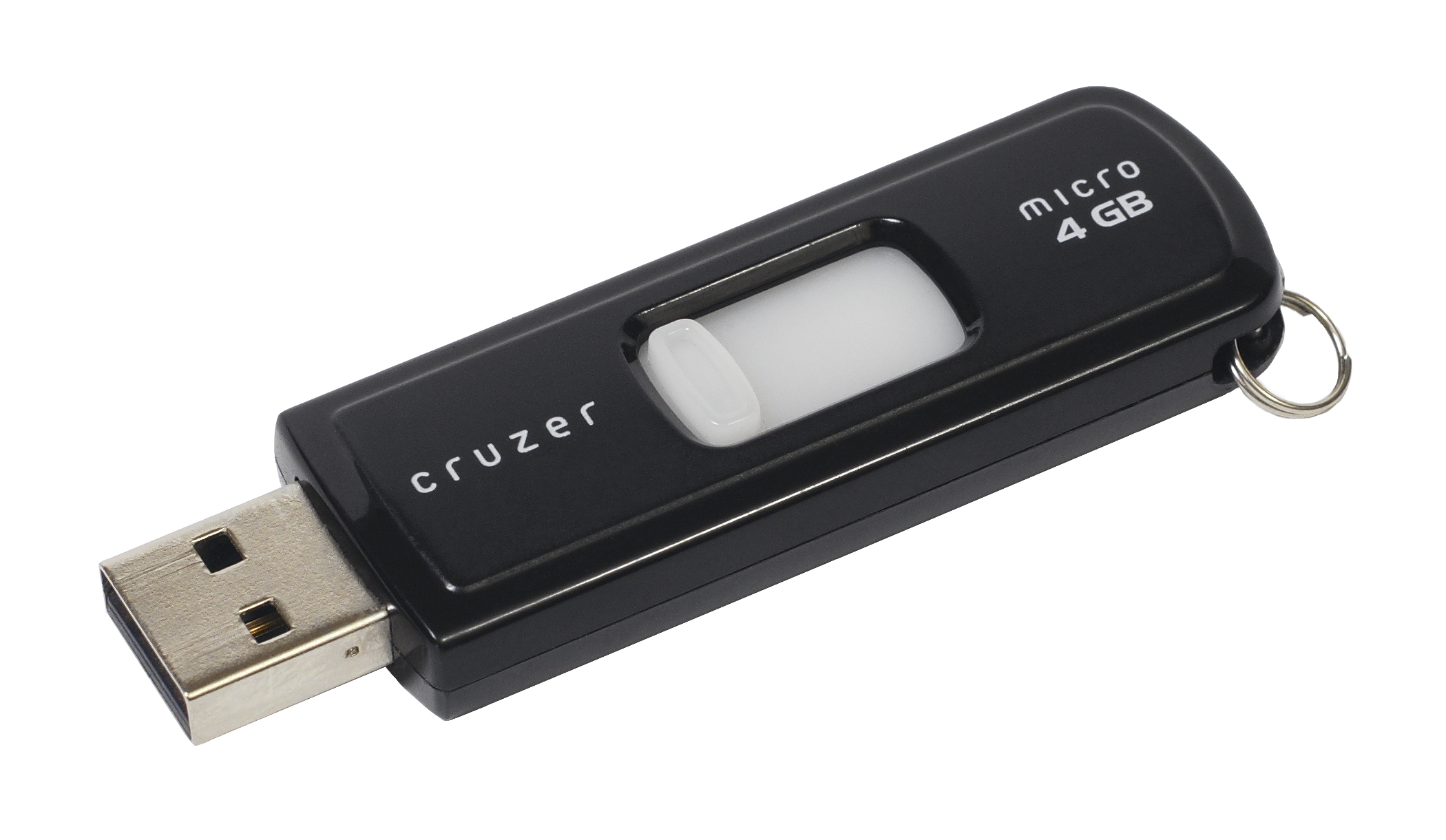|
SoulPad
SoulPad is a mobile computing project developed by IBM from 2004-2005. It enabled users to transfer their operating system between computers using a USB flash drive. Background The SoulPad project was introduced in a 2004 research paper titled "''Reincarnating PCs with Portable SoulPads"''. Researchers suggested that SoulPad could allow users to boot their personal operating environments from USB-compatible storage devices such as cell phones or iPods. The project aimed to separate the user's operating environment (the "soul"), from the physical hardware (the "body"). Usage SoulPad allows users to carry their operating system on a USB storage device. The operating system can be copied onto the device, then connected on another computer and booted from the USB. This restores the operating system to the state of its last saved backup, enabling the user to resume work as if the environment had not been interrupted. Implementation SoulPad utilizes a layered software stack to ... [...More Info...] [...Related Items...] OR: [Wikipedia] [Google] [Baidu] |
Mobile Computing
Mobile computing is human–computer interaction in which a computer is expected to be transported during normal usage and allow for transmission of data, which can include voice and video transmissions. Mobile computing involves mobile communication, mobile hardware, and mobile software. Communication issues include ad hoc networks and infrastructure networks as well as communication properties, protocols, data formats, and concrete technologies. Hardware includes mobile devices or device components. Mobile software deals with the characteristics and requirements of mobile applications. Main principles * Portability: Devices/nodes connected within the mobile computing system should facilitate mobility. These devices may have limited device capabilities and limited power supply but should have a sufficient processing capability and physical portability to operate in a movable environment. * Connectivity: This defines the quality of service (QoS) of the network connectivity ... [...More Info...] [...Related Items...] OR: [Wikipedia] [Google] [Baidu] |
Operating System
An operating system (OS) is system software that manages computer hardware and software resources, and provides common daemon (computing), services for computer programs. Time-sharing operating systems scheduler (computing), schedule tasks for efficient use of the system and may also include accounting software for cost allocation of Scheduling (computing), processor time, mass storage, peripherals, and other resources. For hardware functions such as input and output and memory allocation, the operating system acts as an intermediary between programs and the computer hardware, although the application code is usually executed directly by the hardware and frequently makes system calls to an OS function or is interrupted by it. Operating systems are found on many devices that contain a computerfrom cellular phones and video game consoles to web servers and supercomputers. , Android (operating system), Android is the most popular operating system with a 46% market share, followed ... [...More Info...] [...Related Items...] OR: [Wikipedia] [Google] [Baidu] |
USB Flash Drive
A flash drive (also thumb drive, memory stick, and pen drive/pendrive) is a data storage device that includes flash memory with an integrated USB interface. A typical USB drive is removable, rewritable, and smaller than an optical disc, and usually weighs less than . Since first offered for sale in late 2000, the storage capacities of USB drives range from 8 megabytes to 256 gigabytes (GB), 512 GB and 1 terabyte (TB). As of 2024, 4 TB flash drives were the largest currently in production. Some allow up to 100,000 write/erase cycles, depending on the exact type of memory chip used, and are thought to physically last between 10 and 100 years under normal circumstances (Digital permanence, shelf storage time). Common uses of USB flash drives are for storage, supplementary data backup, back-ups, and transferring of computer files. Compared with floppy disks or Compact disc, CDs, they are smaller, faster, have significantly more capacity, and are more durable due to ... [...More Info...] [...Related Items...] OR: [Wikipedia] [Google] [Baidu] |
Booting
In computing, booting is the process of starting a computer as initiated via Computer hardware, hardware such as a physical button on the computer or by a software command. After it is switched on, a computer's central processing unit (CPU) has no software in its main memory, so some process must load software into memory before it can be executed. This may be done by hardware or firmware in the CPU, or by a separate processor in the computer system. On some systems a power-on reset (POR) does not initiate booting and the operator must initiate booting after POR completes. IBM uses the term Initial Program Load (IPL) on someE.g., System/360 through IBM Z, RS/6000 and System/38 through IBM Power Systems product lines. Restarting a computer also is called Reboot (computing), ''rebooting'', which can be "hard", e.g. after electrical power to the CPU is switched from off to on, or "soft", where the power is not cut. On some systems, a soft boot may optionally clear RAM to zero. Bo ... [...More Info...] [...Related Items...] OR: [Wikipedia] [Google] [Baidu] |
Cell Phones
A mobile phone or cell phone is a portable telephone that allows users to make and receive Telephone call, calls over a radio frequency link while moving within a designated telephone service area, unlike fixed-location phones (landline phones). This radio frequency link connects to the switching systems of a mobile phone operator, providing access to the public switched telephone network (PSTN). Modern mobile telephony relies on a cellular network architecture, which is why mobile phones are often referred to as 'cell phones' in North America. Beyond traditional Voice call, voice communication, digital mobile phones have evolved to support a wide range of additional services. These include text messaging, Multimedia Messaging Service, multimedia messaging, email, and internet access (via LTE (telecommunication), LTE, 5G NR or Wi-Fi), as well as short-range wireless technologies like Bluetooth, Infrared Data Association, infrared, and ultra-wideband (UWB). Mobile phones also ... [...More Info...] [...Related Items...] OR: [Wikipedia] [Google] [Baidu] |
IPods
The iPod is a series of portable media players and multi-purpose mobile devices that were designed and marketed by Apple Inc. from 2001 to 2022. The first version was released on November 10, 2001, about months after the Macintosh version of iTunes was released. Apple sold an estimated 450 million iPod products as of 2022. Apple discontinued the iPod product line on May 10, 2022. At over 20 years, the iPod brand is the longest-running to be discontinued by Apple. Some versions of the iPod can serve as external data storage devices, like other digital music players. Prior to macOS 10.15, Apple's iTunes software (and other alternative software) could be used to transfer music, photos, videos, games, contact information, e-mail settings, Web bookmarks, and calendars to the devices supporting these features from computers using certain versions of Apple macOS and Microsoft Windows operating systems. Before the release of iOS 5, the iPod branding was used for the media pla ... [...More Info...] [...Related Items...] OR: [Wikipedia] [Google] [Baidu] |
Software Stack
In computing, a solution stack or software stack is a set of software subsystems or components needed to create a complete platform such that no additional software is needed to support applications. Applications are said to "run on" or "run on top of" the resulting platform. For example, to develop a web application, the architect defines the stack as the target operating system, web server, database, and programming language. Another version of a software stack is operating system, middleware, database, and applications. Regularly, the components of a software stack are developed by different developers independently from one another. Some components/subsystems of an overall system are chosen together often enough that the particular set is referred to by a name representing the whole, rather than by naming the parts. Typically, the name is an acronym representing the individual components. The term "solution stack" has, historically, occasionally included hardware component ... [...More Info...] [...Related Items...] OR: [Wikipedia] [Google] [Baidu] |
Linux
Linux ( ) is a family of open source Unix-like operating systems based on the Linux kernel, an kernel (operating system), operating system kernel first released on September 17, 1991, by Linus Torvalds. Linux is typically package manager, packaged as a Linux distribution (distro), which includes the kernel and supporting system software and library (computing), libraries—most of which are provided by third parties—to create a complete operating system, designed as a clone of Unix and released under the copyleft GPL license. List of Linux distributions, Thousands of Linux distributions exist, many based directly or indirectly on other distributions; popular Linux distributions include Debian, Fedora Linux, Linux Mint, Arch Linux, and Ubuntu, while commercial distributions include Red Hat Enterprise Linux, SUSE Linux Enterprise, and ChromeOS. Linux distributions are frequently used in server platforms. Many Linux distributions use the word "Linux" in their name, but the Free ... [...More Info...] [...Related Items...] OR: [Wikipedia] [Google] [Baidu] |
Knoppix
Knoppix, stylized KNOPPIX ( ), is an operating system based on Debian designed to be run directly from a CD or DVD (Live CD) or a USB flash drive ( Live USB). It was first released in 2000 by German Linux consultant Klaus Knopper, and was one of the first popular live distributions. Knoppix is loaded from the removable medium and decompressed into a RAM drive. The decompression is transparent and on-the-fly. There are two main editions, available in both English and German: the traditional compact-disc (700 megabytes) edition and the DVD (4.7 gigabytes) "Maxi" edition. Knoppix mostly consists of free and open source software, but also includes some proprietary software, as long as it fulfills certain conditions. Knoppix can be used to copy files easily from hard drives with inaccessible operating systems. To quickly and more safely use Linux software, the Live CD can be used instead of installing another OS. Contents More than 1000 software packages are included on the ... [...More Info...] [...Related Items...] OR: [Wikipedia] [Google] [Baidu] |
Virtual Machine
In computing, a virtual machine (VM) is the virtualization or emulator, emulation of a computer system. Virtual machines are based on computer architectures and provide the functionality of a physical computer. Their implementations may involve specialized hardware, software, or a combination of the two. Virtual machines differ and are organized by their function, shown here: * ''System virtual machines'' (also called full virtualization VMs, or SysVMs) provide a substitute for a real machine. They provide the functionality needed to execute entire operating systems. A hypervisor uses native code, native execution to share and manage hardware, allowing for multiple environments that are isolated from one another yet exist on the same physical machine. Modern hypervisors use hardware-assisted virtualization, with virtualization-specific hardware features on the host CPUs providing assistance to hypervisors. * ''Process virtual machines'' are designed to execute computer programs ... [...More Info...] [...Related Items...] OR: [Wikipedia] [Google] [Baidu] |






